Tuning up a Ridgid Bandsaw
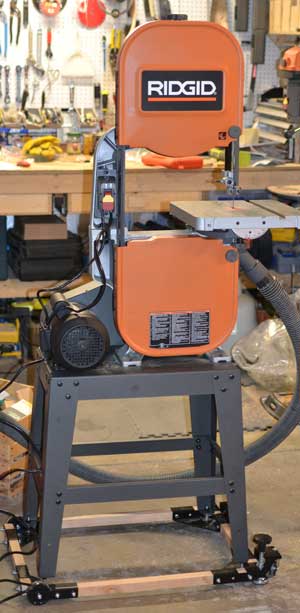 Tuning up a Ridgid Bandsaw
Tuning up a Ridgid Bandsaw
About a year ago RIDGID sent me their venerable BS1400 Bandsaw. This tool has been on the market since about 2001 so it is in thousands of shops across North America. It has served many woodworkers as a pretty good saw but with a little work you can make it better.
Find a Saw
The Ridgid bandsaw has been recently discontinued to make way for the new model coming in the near future but the used market has them for a fair price usually. For used tools I prefer Craigslist over Ebay but newspaper classifieds or the bulletin board at your local wood supplier can be good places too. Some of these tips apply to other bandsaw models as well so if you don’t own a RIDGID saw, that’s ok, this article is for you too.
Disassemble
A lot of these steps involve sticking your hands inside parts of the saw. To get it ready there are a few things that should be done first.
- Unplug the saw
- Remove the blade guard
- Remove the blade
- Remove the drive belt housing
- Remove the drive belt
Swap the Rubber
Many saws in this class ship with rubber bandsaw tires that can get brittle and crack over time. The easy fix is to swap the rubber tires for urethane ones. Urethane tires will stay supple and soft over time unlike the rubber ones. They can be found on Amazon or your local woodworking supply store.
- Use a standard screwdriver to pry up the old rubber tires and slide them off. Some saws may have adhesive to hold the old tires on. A solvent may have to be used to remove it.
- Put the new urethane tires in a bowl of hot tap water to soften them even further so they can stretch.
- Work the tire on as far as you can by hand and use 2 quick clamps (or C-clamps) to hold it in place.
- Use a standard screwdriver as a tire spoon to pry the rest of the tire onto the wheel.
- Finally use something round like a small piece of copper or pvc pipe, spin it by hand until it travels all the way around the wheel to equalize the tire tension.
Add a Link Belt
Like the tires, many saws in this class ship with a rubber V-belt. This belt can serve the saw for many years but in some cases if the belt is bent or kinked in its shipping container it will have a bump. Every time this bump runs over the pulleys it introduces a little vibration. This vibration can shake the whole saw. The easiest solution for this is a new belt. If you can match the size, a V-belt like the original is fine. If you can’t find a good enough match then a link belt is the answer. I found mine at Rockler but Amazon has it as well.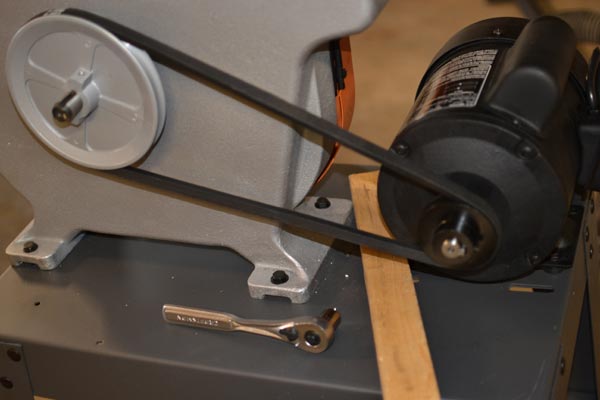
Use Quality Blades
Chances are if you have had your saw awhile or picked it up used, the stock blade is long gone. If it’s still kicking around though it may be time to kick it to the curb. Stock blades can sometimes have a small kink from shipping or the blade weld is a little pronounced or it could be wrong for the task. A quality blade won’t have these issues. I use Olson All-Pro blades from Rockler and Todd uses Wood Slicer blades from Highland Woodworking. Both are quality manufacturers and will give you much better results than a stock blade.
Reassemble and Test the Saw
These three fixes can really help improve the operation of the saw and reduce vibration but it may take a little extra testing and tweaking to get everything right. New blades may take different amounts of tension than the old blade, so you’ll have to experiment a little. If you think that vibration is still an issue, additional stiffening of the saw frame may be necessary. I added some pieces of plywood to the frame to get rid of the vibration that was only present when I added a mobile base.
Additional accessories
In a future article I’ll introduce a couple accessories that can make the 14″ class of saw even better. I’ve added a riser block and a precision fence with resaw guide to my RIDGID bandsaw and now it will cut 12″ logs. Stay tuned!
About the author
2 Comments
Leave a comment
Disclosure
Product reviews on this site contain our opinion of a product or service. We will always strive for objectivity and transparency in our reviews. Our goal is to provide readers with honest, objective information based on our own experiences. We never have and never will accept payment in exchange for a positive review. Many of the products that we review are provided to us for free by a manufacturer or retailer. In some cases, we also have advertising or affiliate relationships with manufacturers and retailers of products and services we review. For additional information please visit our additional disclosure policies.











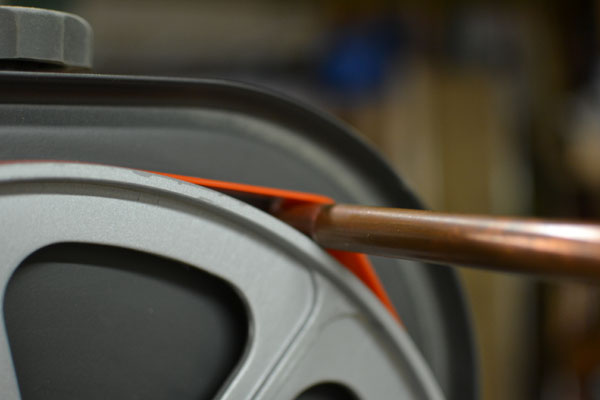
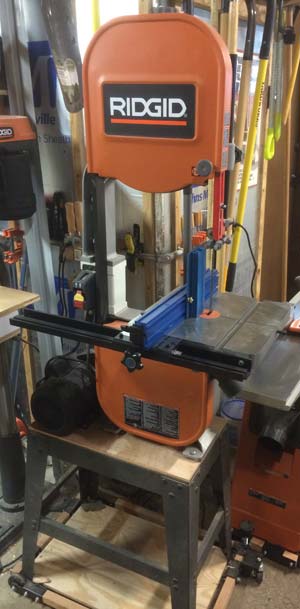
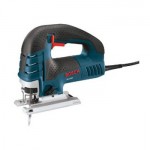












[…] the last article, we shared some tips on how to tune up a RIDGID Bandsaw. We alluded to some additional accessories that can make the saw even better. In this article […]
[…] the last article, we shared some tips on how to tune up a RIDGID Bandsaw. We alluded to some additional accessories that can make the saw even better. In this article […]